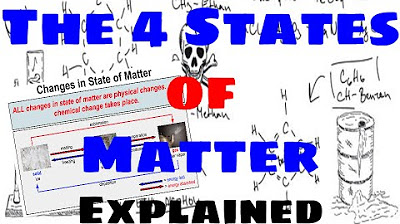Non - Locomotor Skills Lesson
Summary
TLDRIn this educational video, Mr. Hane teaches the difference between locomotor and non-locomotor skills. He demonstrates various non-locomotor exercises like stretching, crunches, and push-ups, which involve movement without changing location. In contrast, locomotor skills include running, hopping, and jumping, which involve movement from one place to another. Mr. Hane engages viewers with interactive exercises, encouraging them to practice and identify the skills themselves. He also explores how these skills can be found in sports, blending theory with practical examples. The video concludes with a challenge for viewers to think of their own locomotor and non-locomotor movements, reinforcing the lesson's key points.
Takeaways
- 🏃 The distinction between locomotor and non-locomotor skills is based on whether the movement involves changing one's location.
- 🔍 Locomotor skills include actions like running, hopping, skipping, jumping, leaping, galloping, and involve movement from one place to another.
- 🧘 Non-locomotor skills are movements that do not involve changing location, such as stretching, curling, arm pull-ups, balancing, swinging, turning, push-ups, and twisting.
- 🎯 Mr. Hane demonstrates various non-locomotor skills and encourages viewers to practice them for 30 seconds each.
- 🤔 The video challenges viewers to identify similarities and differences between locomotor and non-locomotor skills through practice and reflection.
- 🦀 An example of a locomotor movement is the crab walk, which involves moving from one side of the room to another.
- 🚶♂️ An example of a non-locomotor movement is sitting up and lifting the bottom off the ground without moving the body to a new location.
- 🏈 Sports can involve both locomotor and non-locomotor movements, such as swinging a baseball bat (non-locomotor) and running after hitting the ball (locomotor).
- 🤹♂️ The video encourages creativity by asking viewers to think of three locomotor or non-locomotor skills not covered in the lesson.
- 💡 Viewers are prompted to apply their understanding of locomotor and non-locomotor skills to everyday activities and sports.
- 🎓 The lesson aims to make viewers 'local motor experts' by the end, with a deeper understanding of the two types of motor skills.
Q & A
What is the main focus of the video?
-The main focus of the video is to teach the difference between locomotor and non-locomotor skills.
What is the difference between locomotor and non-locomotor skills as explained in the video?
-Locomotor skills involve movement that results in the individual moving from one place to another, while non-locomotor skills involve movement without changing the individual's position.
What are some examples of non-locomotor skills mentioned in the video?
-Examples of non-locomotor skills mentioned include stretching, ab crunches, arm pull-ups, balancing, swinging, turning, push-ups, and twisting.
How does the video engage viewers to practice non-locomotor skills?
-The video asks viewers to practice one of the non-locomotor skills listed on the chart for about 30 seconds when they hear the music.
What locomotor skills are introduced in the video?
-The locomotor skills introduced in the video include running, hopping, skipping, jumping, leaping, galloping, and crab walking.
How is the crab walk demonstrated in the video used to illustrate the concept of locomotor skills?
-The crab walk is used to show that even though the body parts are moving, the individual is not moving from one place to another, thus it's not considered a locomotor skill.
What activity is used to demonstrate a non-locomotor skill that involves sitting up and walking with hands and feet on the ground?
-The activity demonstrated is a variation of a sit-up where one sits up, lifts their bottom off the ground, and starts walking with hands and feet on the ground.
What is the log roll and how does it relate to locomotor skills?
-The log roll is an activity where one rolls their body like a log, moving from one place to another, which makes it a locomotor skill.
How does the video connect locomotor and non-locomotor skills to sports?
-The video connects locomotor and non-locomotor skills to sports by showing examples like swinging a baseball bat (non-locomotor) and running after hitting the ball (locomotor).
What challenge does the video present to the viewers regarding locomotor and non-locomotor skills?
-The video challenges viewers to think of three locomotor or non-locomotor skills or movements that have not been covered in the lesson.
What is the final message of the video regarding locomotor and non-locomotor skills?
-The final message is to encourage viewers to recognize and differentiate between locomotor and non-locomotor skills in their daily activities.
Outlines

This section is available to paid users only. Please upgrade to access this part.
Upgrade NowMindmap

This section is available to paid users only. Please upgrade to access this part.
Upgrade NowKeywords

This section is available to paid users only. Please upgrade to access this part.
Upgrade NowHighlights

This section is available to paid users only. Please upgrade to access this part.
Upgrade NowTranscripts

This section is available to paid users only. Please upgrade to access this part.
Upgrade NowBrowse More Related Video

The Four States of Matter - Explained

Lab Equipment - Explained

3. Gr 11 Life Sciences - Population Ecology - Theory 3 Mark Recapture Method

4. Gr 11 Life Sciences - Population Ecology - Worksheet 1

PENJASKES KELAS X - SOFTBALL

Introduction to Culture [AP Human Geography Review Unit 3 Topic 1]

Menentukan Mr ( massa molekul relatif )
5.0 / 5 (0 votes)